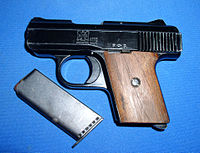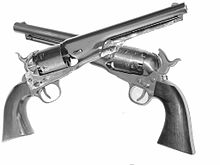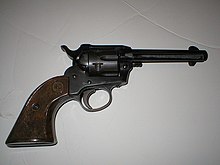Gun laws and policies, collectively referred to as firearms regulation or gun control, regulate the manufacture, sale, transfer, possession, modification, and use of small arms by civilians. Laws of some countries may afford civilians a right to keep and bear arms, and have more liberal gun laws than neighboring jurisdictions. Countries that regulate access to firearms will typically restrict access to certain categories of firearms and then restrict the categories of persons who may be granted a license for access to such firearms. There may be separate licenses for hunting, sport shooting, self-defense, collecting, and concealed carry, with different sets of requirements, permissions, and responsibilities.
Firearms in Canada are federally regulated through the Firearms Act and related provisions of the Criminal Code. Regulation is largely about licensing and registration of firearms, including air guns with a muzzle velocity of more than 500 ft/s or 150 m/s and muzzle energy greater than 4.2 ft⋅lb or 5.7 J.

The .40 S&W (10.2x21mm) is a rimless pistol cartridge developed jointly by American firearms manufacturers Smith & Wesson and Winchester in 1990. The .40 S&W was developed as a law enforcement cartridge designed to duplicate performance of the Federal Bureau of Investigation's (FBI) reduced-velocity 10mm Auto cartridge which could be retrofitted into medium-frame semi-automatic handguns. It uses 0.40-inch (10 mm) diameter bullets ranging in weight from 105 to 200 grains.

The .380 ACP, is a rimless, straight-walled pistol cartridge developed by firearms designer John Moses Browning. The cartridge headspaces on the mouth of the case. It was introduced in 1908 by Colt, for use in its new Colt Model 1908 pocket hammerless semi-automatic, and has been a popular self-defense cartridge ever since, seeing wide use in numerous handguns. Other names for .380 ACP include .380 Auto, 9×17mm, 9mm Browning, 9mm Corto, 9mm Kurz, 9mm Short, and 9mm Browning Court. It should not be confused with .38 ACP. The .380 ACP does not strictly conform to cartridge naming conventions, named after the diameter of the bullet, as the actual bullet diameter of the .380 ACP is .355 inches.
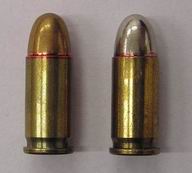
.32 ACP is a centerfire pistol cartridge. It is a semi-rimmed, straight-walled cartridge developed by firearms designer John Browning, initially for use in the FN M1900 semi-automatic pistol. It was introduced in 1899 by Fabrique Nationale, and is also known as the 7.65 mm Browning Short.

The .32 S&W Long, also known as 7.65x23mm, is a straight-walled, centerfire, rimmed handgun cartridge, based on the earlier .32 S&W cartridge. It was introduced in 1896 for Smith & Wesson's first-model Hand Ejector revolver. Colt called it the .32 Colt New Police in revolvers it made chambered for the cartridge.
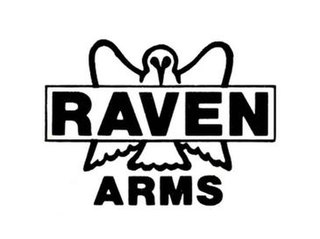
Raven Arms was a firearms manufacturer established in 1970 by firearms designer George Jennings. The Gun Control Act of 1968 prohibiting the importation of inexpensive handguns prompted Jennings to design the MP-25, a .25-caliber semi-automatic pistol, and enter the firearms business. Raven has been referred to as the original "Ring of Fire" company, a term describing companies known for producing inexpensive Saturday night special handguns.
Don Bernard Kates Jr., was an American lawyer and research fellow with The Independent Institute in Oakland, California who focused on promoting gun rights. His books include Armed: New Perspectives On Gun Control, Restricting Handguns: The Liberal Skeptics Speak Out, Firearms and Violence: Issues of Public Policy, and The Great American Gun Debate: Essays on Firearms and Violence.

In American English, a pocket pistol is any small, pocket-sized semi-automatic pistol, and is suitable for concealed carry in a pocket or a similar small space.

Concealed carry, or carrying a concealed weapon (CCW), is the practice of carrying a weapon, either in proximity to or on one's person or in public places in a manner that hides or conceals the weapon's presence from surrounding observers. In the United States, the opposite of concealed carry is called open carry.

Kahr Arms is an American small arms manufacturer focused on compact and mid-size semi-automatic pistols chambered for popular cartridges, including .380 ACP, 9mm Luger, .40 S&W and .45 ACP. Kahr pistols feature polymer or stainless steel frames, single-stack magazines, and double-action-only striker firing actions. Kahr Arms is part of the Kahr Firearms Group, a US-based firearms manufacturer, which also includes Thompson Auto-Ordnance and Magnum Research. The Kahr Firearms Group company headquarters is in Greeley, Pennsylvania, with a manufacturing facility in Worcester, Massachusetts.
In the United States, the right to keep and bear arms is modulated by a variety of state and federal statutes. These laws generally regulate the manufacture, trade, possession, transfer, record keeping, transport, and destruction of firearms, ammunition, and firearms accessories. They are enforced by state, local and the federal agencies which include the Bureau of Alcohol, Tobacco, Firearms and Explosives (ATF).

A handgun is a firearm designed to be usable with only one hand. It is distinguished from a long gun which needs to be held by both hands and braced against the shoulder. Handguns have shorter effective ranges compared to long guns, and are much harder to shoot accurately. While most early handguns are single-shot pistols, the two most common types of handguns used in modern times are revolvers and semi-automatic pistols, although other handguns such as derringers and machine pistols also see infrequent usage.
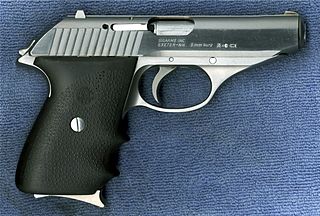
The SIG Sauer P230 is a small, semi-automatic handgun chambered in .32 ACP or .380 Auto. It was designed by SIG Sauer of Eckernförde, Germany. It was imported into the United States by SIGARMS in 1985. In 1996 it was replaced by the model P232.

Röhm Gesellschaft, often referred to as RG, is a German brand of firearms and related shooting equipment. RG developed as a diversification of Röhm GmbH in the 1950s. After 1968, RG Industries was established as a US division in Miami and operated until 1986. In 2010, the RG brand was acquired by Umarex GmbH & Co. KG. Röhm's RG-14 handgun, used in an assassination attempt on then US President Ronald Reagan, was referred to in 1981 as a Saturday night special, a cheaply manufactured firearm of perceived low quality, believed at the time to be favored by criminals.
.32 caliber is a size of ammunition, fitted to firearms with a bore diameter of 0.32 inches (8.1 mm).
Bersa is an Argentine arms manufacturer, located in the city of Ramos Mejía in Argentina.

The Colt New Service is a large frame, large caliber, double-action revolver made by Colt from 1898 until 1941. Made in various calibers, the .45 Colt version with a 5½" barrel, was adopted by the U.S. Armed Forces as the Model 1909.

The New Nambu M60 (ニューナンブM60) is a double-action revolver chambered in .38 Special based upon Smith & Wesson-style designs.
In Honduras, the commerce, ownership, possession and use of firearms is regulated. Escalation in crime and the use of firearms in the commission of crimes and homicides has brought political and public discourse to consider regulation of arms.

